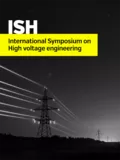Summary
Global Warning Potential (GWP) and Ozone Depletion Potential (ODP) of CF3I are much less than those of SF6 or ozone depleting substances. This paper provides an overview of the research work into the dielectric properties of CF3I, CF3I/N2 mixture, and CF3I/CO2 mixture that has been conducted at the University of Tokyo in this decade. The authors have measured V-t characteristics in CF3I and its gas mixtures with various electrode-systems under ac, lightning impulse, and steep square pulse fields. The dielectric strength of CF3I gas is 1.2 times higher than that of SF6 gas under uniform field, besides it becomes smaller than SF6 under non-uniform field where the field utilization factor is below 0.4. The flashover voltage on clean dielectric surface in CF3I is also higher than that in SF6. However, the insulation performance decreases in the case where solid iodine generated by flashover is deposited on the dielectric surface. The flashover voltage on the dielectric surface in CF3I/CO2 an CF3I/N2 gas mixtures shows not a few synergisms as well as the sparkover voltage in gaseous non-uniform gap in CF3I/CO2 and CF3I/N2 gas mixtures. These results suggest that it is appropriate for CF3I to use as SF6-substitute gas in Gas Insulated Transmission Line (GIL) where CF3I is expected to be used as dielectric insulation medium. In other words, it is not easy for CF3I to apply to GIS in which it will be used not only as insulation medium but also as switching and interrupting medium. The boiling point of CF3I at atmospheric pressure is – 22.5 °C, which would liquefy under typical operating pressure of high-voltage GIL equipment. Therefore, it has to be used in low proportions as part of a mixture with CO2 or N2 to reduce the liquefaction temperature. This paper proposes a simple ranking method where the dielectric properties, saturated gas pressure, and GWP are taken into account in selecting the mixture ratio as pragmatic gas mixture to GIL. With this method, it turns out that CF3I(20%)/CO2(80%) or CF3I(20%)/N2(80%) gas mixtures are the reasonable choices. In addition, the applicability of these CF3I gas mixtures to the existing 275kV-GIL are evaluated through computation of cross sectional size of conductors based not only on insulation designing but also on thermal designing.
Additional informations
| Publication type | ISH Collection |
|---|---|
| Reference | ISH2017_428 |
| Publication year | |
| Publisher | ISH |
| File size | 539 KB |
| Pages number | 6 |
| Price for non member | Free |
| Price for member | Free |
Authors
K. HIDAKA



